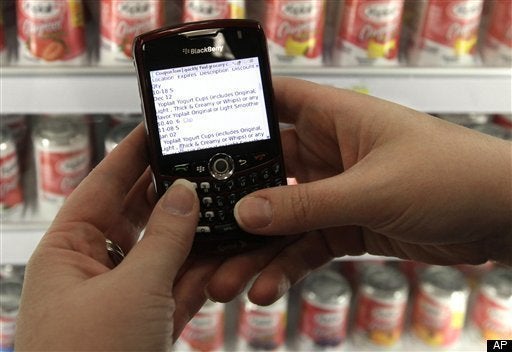
Along with the changing fall leaves, there's another thing Americans can count on each November -- the flood of electronics sales advertisements in our mailboxes, email spam filters and newspaper pages that presage Black Friday.
The low prices promised in these ads are meant to entice us to buy gadgets we don't really need, or, to replace gadgets that are still working with slightly newer versions.
As I explain in my new movie, The Story of Electronics, product designers and stuff-pushers call this "shortening the replacement cycle." That means, getting us to buy new stuff faster and faster. And with electronics, it's really tempting. It seems every few months a new version of my phone is out with more features.
And do we ever oblige. Industry analysts expect that Americans will spend more than $8.5 billion on consumer electronics this month alone!
But isn't that good for the economy? $8.5 billion dollars making the rounds? What's not to like?
Plenty.
Making all these gadgets takes an enormous environmental and public health toll. Mining the metals trashes the environment in communities from Congo to Indonesia; assembling the gadgets uses huge amounts of water and energy and exposes workers to a host of toxic chemicals; and getting rid of them when we're on to the next, newer, better model creates mountains of old electronics -- what's called e-waste.
In the U.S. we throw away about 400 million electronic gadgets each year -- more than one per person. Only about 20 percent of e-waste in the U.S. is collected for recycling; the rest goes to landfills and incinerators where the toxics leach out to contaminate our air, water and communities.
And the 20 percent destined for recycling isn't all that great either. Investigations have found that 50 to 80 percent of this stuff is shipped overseas to Asia and Africa where it is broken apart by workers to extract the small bits of valuable metals. In addition to those pieces of gold and copper, today's electronics routinely contain toxic chemicals like lead, mercury, PVC, chlorine, and bromines that end up poisoning workers and their communities in the importing country.
The good news is that while the production, consumption and disposal of short-lived, toxics-laden electronics are a really big problem, the solution is pretty simple: Make them Safe, Make them Last, and Take them Back.
MAKE THEM SAFE! We know it's possible to make electronics a whole lot less toxic because some companies are already moving in that direction. And the entire European Union has banned a host of toxic materials from all electronics sold there. If Europe can do it, why can't we?
MAKE THEM LAST! My friend says that the only consumer product with a shorter life span than a cell phone these days is an ice cream cone. Slight exaggeration, but if the current trajectory continues, we'll be there soon.
The average life of a cell phone in the U.S. these days is about 18 months, and the majority are chucked and replaced while they still work. The average laptop lasts longer -- about three to five years -- before being replaced, but that still leaves us throwing away more than 100,000 computers in the U.S. every day. In addition to making them safer, companies need to make electronics more durable, and modular, so we can upgrade or repair components as needed, rather than chuck the whole thing to buy another.
TAKE THEM BACK! Innovations in reducing toxics, design for recyclability and modular components for easier upgrades are all great for new gadgets, but what about the millions stored in all of our basements, closets, drawers and garages? Those are eventually going to be tossed out, leaving local governments to figure out how to deal with them safely. Unless, that is, we get better Product Take Back laws.
Take Back holds manufacturers responsible for their products at the end of their useful life, preventing them from externalizing the cost of recycling or disposing of these hazardous products onto local governments, communities and the environment. Why should taxpayers pay to safely recycle every toxic, poorly designed, short-lived piece of electronic gadgetry that comes through the system? That's like being an enabler in a dysfunctional relationship. It is time we hold electronics manufacturers responsible for their product design decisions.
Everyone has a role to play in solving this problem. You can resist the upgrade, take good care of your electronics, make them last as long as possible and, when you finally have to throw them out, find an E-stewards certified recycler to take it.
Federal and state governments can enact and enforce meaningful laws to protect worker health and the environment and to prohibit hazardous waste exports to developing countries.
Local governments can stop acting as the electronics industry's garbage man by forcing companies to deal with their own mess.
And businesses can invest as much or more in making their products safe and durable as they do in other areas of innovation.
Billions of us want access to the incredible web of information and entertainment that electronics offer. But it's the access we want, not all that toxic garbage.
So let's send the "design-for-the-dump" mentality to the dump where it belongs and start building an electronics industry -- and a global society -- that's designed to last.
